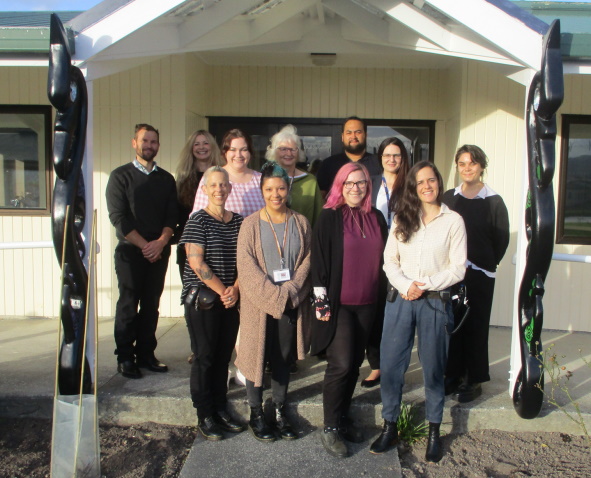 A partnership between the Te Whare Manaakitanga (TWM) team at Rimutaka Prison and Auckland South Corrections Facility (ASCF) has resulted in an exciting new pilot. The six-month pilot, which ended in July, has supported men who have graduated from TWM to maintain a strong focus on preparing for successful reintegration through living in a dedicated self-care unit at ASCF.
A partnership between the Te Whare Manaakitanga (TWM) team at Rimutaka Prison and Auckland South Corrections Facility (ASCF) has resulted in an exciting new pilot. The six-month pilot, which ended in July, has supported men who have graduated from TWM to maintain a strong focus on preparing for successful reintegration through living in a dedicated self-care unit at ASCF.
Self-care units operate like a flatting environment, are an intermediate step between prison and everyday life. They are designed to give men in prison greater autonomy while still operating within prison grounds and with supervision.
Te Whare Manaakitanga is one of four specialist units in our prisons that offer the Special Treatment Unit: Violent Offenders (STU:VO). The STU:VO is a nine-month psychological programme within a therapeutic community dedicated to treating people who have been identified as having a high risk of violent reoffending.
However, when men complete a STU programme and return to mainstream units, they can slip back into old habits and lose a lot of what they have practised in the programme.
Manager Psychological Services for Te Whare Manaakitanga Nicky Perkins says self-care units provide an excellent opportunity for men to build on what they learned from the STU experience. The eligibility criteria for selection are strict and are based partly on good behaviour and a demonstrated commitment to positive change. The men continue to be held to a high standard of behaviour once accepted into the self-care unit.
Overcoming barriers
Nicky knew that the men participating in the pilot would be a critical part of the pilot’s success.
“We had weekly meetings with the men leading up to the move to self-care. The new unit is a blank slate for them to choose the values and the kawa. Corrections worked with the men to write a safety plan that worked for everyone.’
“The early conversations with the men were mixed with doubt and anxiety, some of them were feeling overwhelmed and didn’t believe they were going to self-care,” says Nicky. Being around so many people and moving from a known and highly structured environment to one which had a lot more freedoms and uncertainty, was a huge change that required the men to deal with unfamiliar and uncomfortable situations.
If one of the men feel down, they support each other by drawing from the values they learnt at TWM. On-going therapeutic sessions also offer opportunities to talk through any issues.
The men are also aware of the consequences of poor behaviour, which could result in the whole group being returned to TWM. Returning to TWM, whether sent back or by choice, is a feature of the self-care pilot model.
Short term wins
The men have had several early wins already: they shopped together and stuck together. This meant they could practice what they have learned from the programme.
Simon* (not his real name) was initially very keen to take up the invitation to go to self-care at ASCF when the opportunity was offered.
However, the university course he wanted to do was not available through ASCF, so he returned to TWM to do it there. Having the time in Auckland gave Simon the space to think about the direction he wanted to take with his life, including study.
Moving forward
Given its success, the pilot has become part of the culture and operations at ASCF.
Nicky Perkins' original vision for the pilot was for more men to move into the self-care unit when others leave. This has happened already as three new men have moved up to ASCF to replace the two men who are on parole and Simon*, who went back to TWM. Simon said he was glad to be there when the new men arrived, to help them settle in, demonstrating the tuakana-teina (older sibling/younger sibling) approach.
The six-month pilot ended in July and a powhiri at ASCF was held to mark the close of the pilot and a transition towards becoming business as usual for the prison.
Going forward, Nicky sees her role as supporting other specialist treatment units throughout the country to launch a similar pilot.
The success of this pilot has demonstrated how change can be achieved in an operational setting and how effective a collaboration such as this can be.

